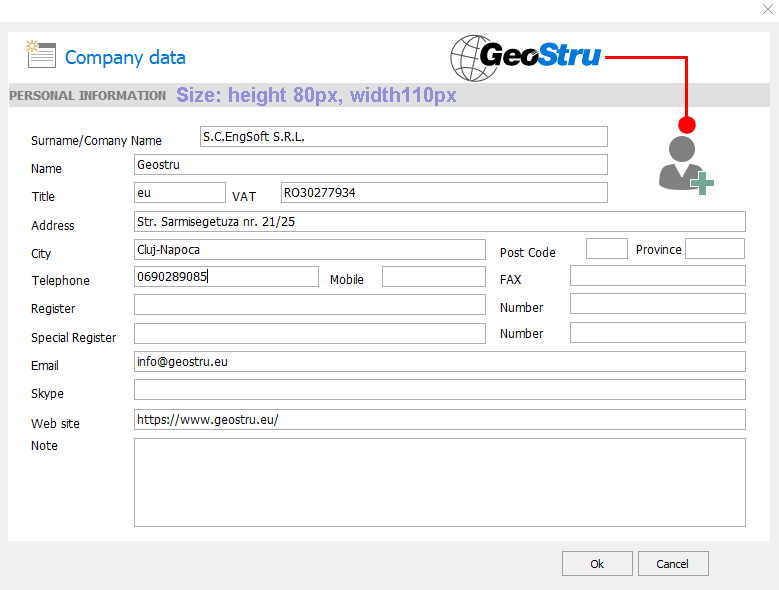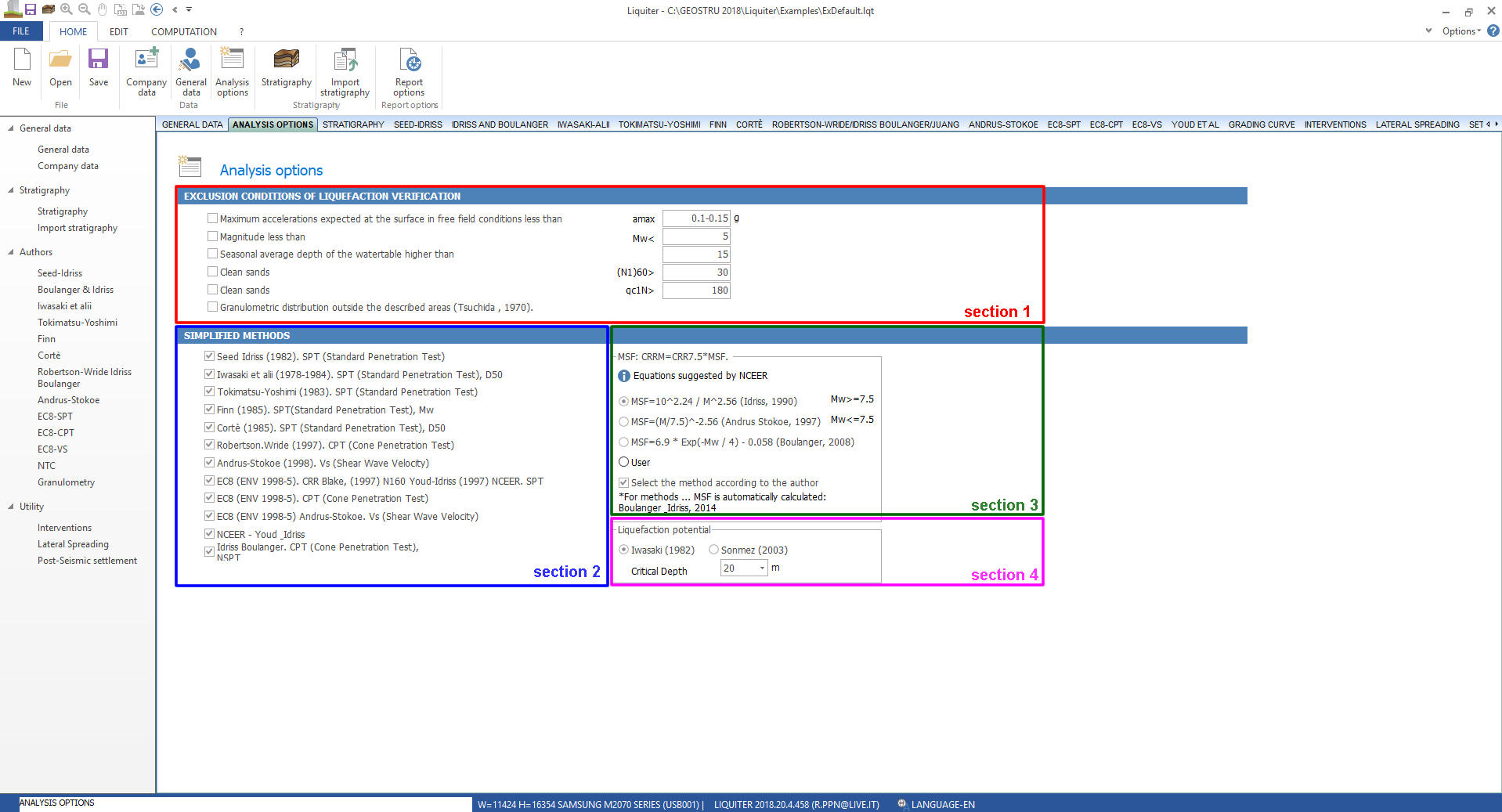Company data
The command opens a window in which you can inser personal or company data. A range of information can be inserted: company name, title, VAT number, address, etc, data then will be shown in the computation report.
Clicking on the add an image / logo (*. bmp, *. jpg) can be inserted.

General data
In section 1 (Project and location) can be inserted information regarding the project and location of the work. Data can then be used in the graphical output. In the same section must be inserted the normative to consider and the safety factor.
In section 2 (Loads in ground level) the software gives the possibility to calculate the stress increment in the ground induced by a load on the surface. In section 3 define the geometry of the load, choose the computation methodand insert the required elastic parameter.
To calculate the maximum shear stress induced by the earthquake the software uses simplified methods developed by various authors, while for the computation of the safety factor is required the maximum acceleration induced by the earthquake in surface. For this purpose, in section 4, insert the required seismic data useful to determine this parameter.
The magnitude and distance to epicenter is used by the computation code to correct the Cyclic Stress Ratio using correlations proposed by various authors (to choose in the analysis options).

Analysis options
Using this window the user can define the exclusion conditions for the liquefaction verification based on the chosen normative. The limits can be altered manually, inserting the values in the appropriate fields (section 1).
The methods to be used can be chosen in section 2.
To adjust the value of CSR (Cyclic Stress Ratio) to earthquakes having a magnitude different from 7.5 it must be inserted the MSF (Magnitude Scaling Factor). The computation equations suggested by NCEER in base of the chosen author must be selected in section 3.Il programma fornisce anche la stima dell'indice del potenziale di liquefazione, Iwasaki(1982) e Sonmez (2003) - sezione 4, riferendosi ad una profondità critica di 10 oppure 20 metri.

© Geostru